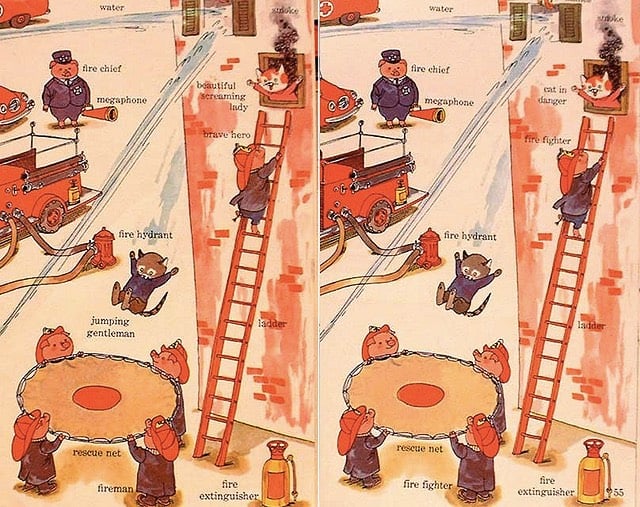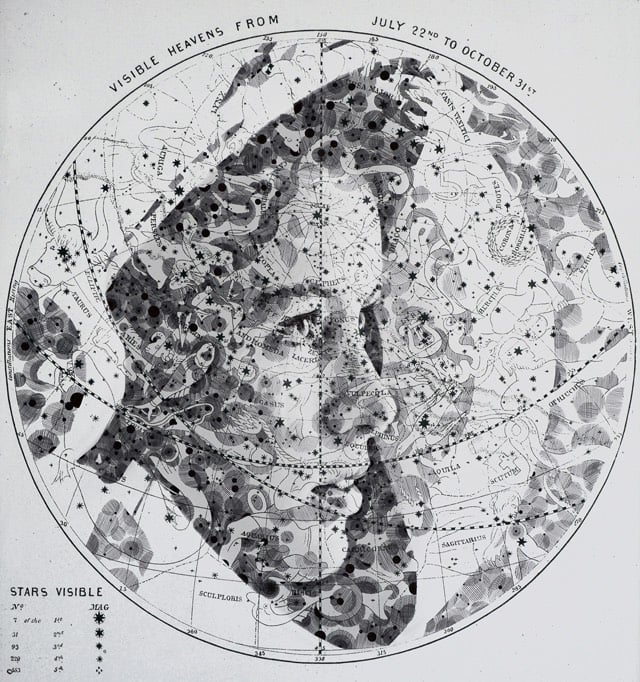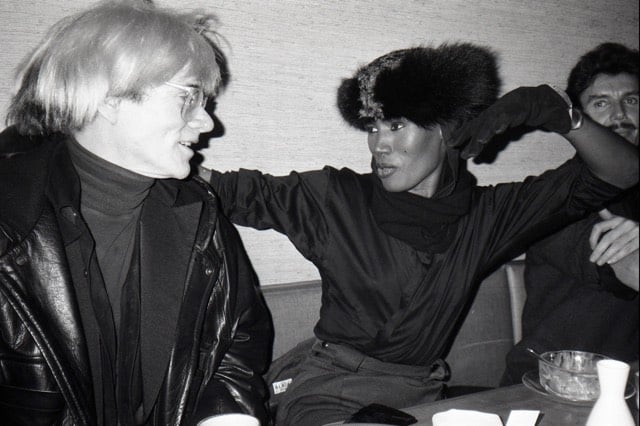


This site is made possible by member support. 💞
Big thanks to Arcustech for hosting the site and offering amazing tech support.
When you buy through links on kottke.org, I may earn an affiliate commission. Thanks for supporting the site!
kottke.org. home of fine hypertext products since 1998.
Entries for November 2015
Can you ID these unlabeled subway maps?

Using Neil Freeman’s maps at Fake is the New Real, the Guardian created a quiz: Can you identify the world cities from their ‘naked’ metro maps? As interested as I am in both maps and subways, I did shockingly bad on this quiz. (via @daveg)
Update: Here’s a similar quiz using unlabeled street maps. See also Smarty Pins and GeoGuessr for more geography quiz fun.
The vocal ranges of pop singers. Mariah Carey, Prince, and Steven Tyler are near the top. But #1 is surprising…
America’s junk news binge epidemic
In the midst of this piece by Matt Taibbi on Republican presidential candidates blaming media bias for their outright falsehoods are two paragraphs which perfectly sum up the state of contemporary news media:
It’s our fault. We in the media have spent decades turning the news into a consumer business that’s basically indistinguishable from selling cheeseburgers or video games. You want bigger margins, you just cram the product full of more fat and sugar and violence and wait for your obese, over-stimulated customer to come waddling forth.
The old Edward R. Murrow, eat-your-broccoli version of the news was banished long ago. Once such whiny purists were driven from editorial posts and the ad people over the last four or five decades got invited in, things changed. Then it was nothing but murders, bombs, and panda births, delivered to thickening couch potatoes in ever briefer blasts of forty, thirty, twenty seconds.
If Americans are getting intellectually fat and lazy binging on junk news, perhaps the solution is something akin to “Eat food, not too much, mostly plants,” Michael Pollan’s advice for healthy eating: Follow the news, not too much, mostly facts.
Update: I was reminded that Clay Johnson wrote an entire book called The Information Diet (at Amazon).
The modern human animal spends upwards of 11 hours out of every 24 in a state of constant consumption. Not eating, but gorging on information ceaselessly spewed from the screens and speakers we hold dear. Just as we have grown morbidly obese on sugar, fat, and flour-so, too, have we become gluttons for texts, instant messages, emails, RSS feeds, downloads, videos, status updates, and tweets.
We’re all battling a storm of distractions, buffeted with notifications and tempted by tasty tidbits of information. And just as too much junk food can lead to obesity, too much junk information can lead to cluelessness. The Information Diet shows you how to thrive in this information glut-what to look for, what to avoid, and how to be selective. In the process, author Clay Johnson explains the role information has played throughout history, and why following his prescribed diet is essential for everyone who strives to be smart, productive, and sane.
Johnson spoke at Webstock the same year I did…here’s a video of his talk about Industrialized Ignorance. (via @philipashlock)
This Book is a Camera

Kelli Anderson is at it again. Her pop-up book, This Book is a Planetarium, is due out this spring, but in the meantime, she’s made a book that turns into an actual camera. And you can buy it or make your own. Here’s how the camera works:
My copy arrived in the mail the other day and I can’t wait to try it out.
Whoa, Amazon releases more details and videos about their drone delivery program. The drones are huge!
A moving cover for the New Yorker
Chris Ware, in collaboration with John Kuramoto, Ira Glass, and Nico Muhly, made a moving cover for the latest issue of the New Yorker, both in the sense that it is actually in motion and that the story it tells is touching and makes an impression.
The New Yorker is arguably the primary venue for complex contemporary fiction around, so I often wonder why the cover shouldn’t, at least every once in a while, also give it the old college try? In the past, the editors have generously let me test the patience of the magazine’s readership with experiments in narrative elongation: multiple simultaneous covers, foldouts, and connected comic strips within the issue. This week’s cover, “Mirror,” a collaboration between The New Yorker and the radio program “This American Life,” tries something similar. Earlier in the year, I asked Ira Glass (for whose 2007-2009 Showtime television show my friend John Kuramoto, d.b.a. “Phoobis,” and I did two short cartoons) if he had any audio that might somehow be adapted, not only as a cover but also as an animation that could extend the space and especially the emotion of the usual New Yorker image.
An older, smaller developed world
From the WSJ, a big package on how life will be in 35 years: 2050: Demographic Destiny. In the developed world, the future will be smaller.
Next year, the world’s advanced economies will reach a critical milestone. For the first time since 1950, their combined working-age population will decline, according to United Nations projections, and by 2050 it will shrink 5%.
As Dave Pell writes in Nextdraft:
In other words, it turns out that the big problem in the world isn’t that there are too many people, but rather that there are too few (Thanksgiving dinners excepted).
A final test of relativity
A European Space Agency probe will be launched into space early next month to help test the last major prediction of Einstein’s theory of general relativity: the existence of gravitational waves.
Gravitational waves are thought to be hurled across space when stars start throwing their weight around, for example, when they collapse into black holes or when pairs of super-dense neutron stars start to spin closer and closer to each other. These processes put massive strains on the fabric of space-time, pushing and stretching it so that ripples of gravitational energy radiate across the universe. These are gravitational waves.
The Lisa Pathfinder probe won’t measure gravitational waves directly, but will test equipment that will be used for the final detector.
LISA Pathfinder will pave the way for future missions by testing in flight the very concept of gravitational wave detection: it will put two test masses in a near-perfect gravitational free-fall and control and measure their motion with unprecedented accuracy. LISA Pathfinder will use the latest technology to minimise the extra forces on the test masses, and to take measurements. The inertial sensors, the laser metrology system, the drag-free control system and an ultra-precise micro-propulsion system make this a highly unusual mission.
(via @daveg)
Happy Thanksgiving everyone! “Fuck turkey. Turkey is not a good-tasting bird.”
Why isn’t it faster flying west?
Why isn’t it super-fast to fly west in an airplane, given that the Earth is spinning at 700-1000 miles per hour relative to its center? This seems like a sorta-variation on the old airplane on a treadmill question, doesn’t it?
Tank with stabilized gun excels at balancing beer
The Leopard 2 battle tank was developed for the West German army in the 70s and has a fully stabilized main gun. What does that mean? It means that even if you’re flying along at 30 mph on bumpy ground, your gun remains steadily pointed on-target (like an owl or chicken head). It also means you can balance a full mug of beer on the gun without spilling a drop, making the Leopard the world’s best and most expensive waiter. (via @MachinePix)
Update: Here’s a longer video featuring the same tank. The commentary is in German, but the visuals aren’t that difficult to follow.
In addition to covering how the stabilizing gun works, they show how the tank stays level over uneven terrain and how the gun can stay locked on a target even when the tank is moving from side to side…the video of which is unnerving. (via @le_barte)
Teen solves Cube in under 5 seconds
Fourteen-year-old Lucas Etter solved a randomly scrambled Rubik’s Cube in just 4.9 seconds the other day, the first time anyone has ever solved one under five seconds. As Oliver Roeder writes over at 538, Cube solve times have fallen quickly in the past decade.
In these competitions, the colorful cubes are randomly scrambled according to a computer program, and a solver has 15 seconds to inspect a cube before racing to spin it back to its organized state. The first official record - 22.95 seconds - was set at the first world championship, held in 1982 in Hungary, home country of the cube’s inventor, Erno Rubik. But speed cubing went into hibernation for two decades, until the next world championship was held in 2003. From there, the record has fallen precipitously, thanks to innovations like the Fridrich method, the Petrus system and even “cube lube.”
(via @djacobs)
Lucas on the Star Wars divorce
George Lucas says he had nothing to do with The Force Awakens and furthermore that the movie was not done the way he would have done it.
“The issue was ultimately, they looked at the stories and they said, ‘We want to make something for the fans,’” Lucas said. “People don’t actually realize it’s actually a soap opera and it’s all about family problems — it’s not about spaceships. So they decided they didn’t want to use those stories, they decided they were going to do their own thing so I decided, ‘fine…. I’ll go my way and I let them go their way.’”
Soooooooooooooooo, if Star Wars is a family story, why did you make it about spaceships and special effects?
Let’s get rid of the penny
This week on Last Week Tonight, John Oliver rails against the penny. This seems like such an obvious thing, that we should stop using pennies, but I bet if the government ever moved to ban pennies, it would set off a firestorm of protest.
The best books of 2015
The person I listen to the most regarding books I should be reading is Tyler Cowen…he has never once steered me wrong. So when he wrote about the best fiction of 2015, I perked up. I’ve been hearing many good things about Elena Ferrante’s series (Cowen himself flagged her The Lost Daughter as a favorite back in 2008) but his assertion that her recent series of novels ranks as “one of the prime literary achievements of the last twenty years” puts it solidly on my holiday beach reads list. The New World by Chris Adrian & Eli Horowitz and Vendela Vida’s The Diver’s Clothes Lie Empty also sound particularly interesting.
Update: Cowen recently shared his list of best non-fiction books of the year as well. Biographies rule the list: on Elon Musk, Henry Kissinger, Margaret Thatcher, and Genghis Khan. What a list…but I have to say that reading biographies of Thatcher or Kissinger doesn’t appeal at all.
Update: The NY Times weighs in with their list of 100 Notable Books of 2015. Between the World and Me by Ta-Nehisi Coates makes an appearance, as do the latest installments by Ferrante and Karl Ove Knausgaard.
Update: From Buzzfeed, The 24 Best Fiction Books of 2015 and from Slate, The Overlooked Books of 2015.
Update: The NY Times Sunday Book Review names their 10 Best Books of 2015. Coates and Ferrante feature. By my count, 7 of the 10 books are written by women.
Update: From Slate, a list of the best audiobooks of 2015. The Economist’s best books of the year, including SPQR: A History of Ancient Rome and Steve Silberman’s NeuroTribes. For part one of their best books list, The Guardian asked writers for their favorite books of the year; Max Porter’s Grief is the Thing with Feathers got multiple mentions (but is not yet out in the US).
Update: Amazon’s editors picked their 100 best books of the year and Lauren Groff’s Fates and Furies topped the list. The top non-fiction book is Becoming Nicole: The Transformation of an American Family.
Update: A design-oriented list from Michael Bierut, including The Making of Stanley Kubrick’s ‘2001: A Space Odyssey’.
Update: Bill Gates shared his favorite books of 2015, including Randall Munroe’s Thing Explainer: Complicated Stuff in Simple Words.
For The Millions Year in Reading 2015, they asked a bunch of writers for their reading recommendations. Joyce Carol Oates recommends the Didion biography The Last Love Song while Celeste Ng read The Suicide Index.
The Atlantic asked their editors and writers to share The Best Book I Read This Year. This is one of several lists to include The Invention of Nature: Alexander von Humboldt’s New World by Andrea Wulf.
Update: The NY Times book critics weigh in with their favorite books of the year. Moar Ferrante! Moar Coates!
Forecasting awesome sunsets

A team of three Pennsylvania meteorologists is now providing a coast-to-coast sunset quality forecast.
The team behind SunsetWx has already published a thorough methodology of its algorithm and a case study of successfully predicted “vivid” sunsets its first day of forecasting last week. Basically, the model blends high-resolution forecasts of humidity, pressure changes, and clouds at various levels of the atmosphere, weighting wispy upper-level clouds the strongest and penalizing for thick, low-level clouds or average clear sky evenings.
They totally called Sunday’s bonkers NYC sunset, so maybe they’re worth a follow. Sunset photo by @AirlineFlyer.
Want to learn how to enjoy a cold dark winter? Take a page from the Norwegians.
Bezos’ rocket achieves controlled landing back on Earth
A rocket built by Blue Origin, an aerospace company backed by Jeff Bezos, recently reached space and executed a controlled landing back on Earth, which allows it to be used again. Bezos himself joined Twitter1 this morning to announce the news. Elon Musk, whose SpaceX company has been trying (and failing) to do something similar lately, congratulated Bezos and his team on Twitter2 but also threw a little shade on BO’s efforts to reach “space” vs. SpaceX’s efforts to reach “orbit”.
It is, however, important to clear up the difference between “space” and “orbit”, as described well by https://what-if.xkcd.com/58/. Getting to space needs ~Mach 3, but GTO orbit requires ~Mach 30. The energy needed is the square, i.e. 9 units for space and 900 for orbit.
Welcome to Twitter, Jeff.
Fire tornado in super slow motion
The Slow Mo Guys lit a bucket of kerosene on fire, surrounded it with 12 box fans, whipped the fire into a tornado, and filmed it with slow motion cameras at up to 2500 fps. I don’t know about you, but I want quit my job, say goodbye to my family, give this mesmerizing rotating fire all of my money, and follow it around the world, doing its bidding. (via colossal)
The movie that no one will see for 100 years
Perhaps inspired by the long time scale filmmaking of Richard Linklater’s Boyhood, John Malkovich and Robert Rodriguez have teamed up to make a movie that won’t be released until 2115. Why? As a promotion for luxury brand Louis XIII Cognac, which is also aged 100 years. According to io9, Louis XIII is sending out 1000 tickets to people whose descendants will be able to see a screening of the film 100 years from now.
I wonder how serious they are about this? To what extent have they futureproofed their media? The io9 piece says the movie is “preserved on film stock”…is that and an old movie projector sufficient? Have they consulted with MoMA or Danny Hillis?
Buster Keaton and the Art of the Gag
For the latest installment of Every Frame a Painting, Tony Zhou and Taylor Ramos examine the artistry and thought silent film master Buster Keaton put into the physical comedy in his movies. I used to watch all sorts of old movies with my dad (Chaplin, Keaton, Laurel & Hardy) and had forgotten how good Keaton was. If you’re anything like me in wanting to head down a Keaton rabbit hole, they recommend starting with the first short film he directed and released, One Week.
See also Studs Terkel’s 1960 interview with Keaton, a video showing Keaton’s use of symmetry and center framing (Wes Anderson, Kubrick), Every Frame a Painting episode on Jackie Chan, and The Ultimate Buster Keaton Collection, a 14-disc Blu-ray box set.
Trailer for season 2 of Transparent
Transparent was my favorite first season of television since Game of Thrones, or maybe even Mad Men. So I’m delighted to see the trailer for the show’s second season, which starts on Dec 11. If you haven’t seen the first season yet, I would highly recommend doing so…this show does so many things right.
Adele’s isolated vocals from SNL
At the risk of turning this into an Adele fan site, here are the isolated vocals for her performance of “Hello” for Saturday Night Live. They are raw and flawless and real and everything pop music isn’t these days.
Update: That YouTube video got yanked, but I found the vocals on Soundcloud. We’ll see how long that’ll last.
Update: Welp, that lasted about 10 minutes. Digg has embedded their own video. How fast will that one disappear?
Taking a neural net out for a walk
Kyle McDonald hooked a neural network program up to a webcam and had it try to analyze what it was seeing in realtime as he walked around Amsterdam. See also a neural network tries to identify objects in Star Trek:TNG intro. (via @mbostock)
Adele Shows Up to Adele Impersonator Contest in Disguise
This is all sorts of charming. BBC held an Adele impersonator contest and arranged for Adele to compete in disguise as a woman named Jenny. I love the looks on the women’s faces when they realize what’s going on.
See also Jewel’s undercover karaoke and Macklemore and Ryan Lewis surprising a bus full of passengers with a performance.
Don’t sneak
Charles Haggerty is a promising candidate for the best and most chill dad of all time. In the late 1950s, in a much less progressive era, he had a talk with his son, who would come to realize later in life that he (the son) was gay, about the responsibility you have to your true self.
Don’t sneak. Because if you sneak like you did today, it means you think you doing the wrong thing. And if you run around spending your whole life thinking that you’re doing the wrong thing, then you’ll ruin your immortal soul.
Reader, I don’t often say things like “that stopped me dead in my tracks” because life doesn’t work like that most of the time, but that last bit, about ruining your soul, did just that. A fantastic reminder of to thine own self be true. (via cup of jo)
Noma: My Perfect Storm
Noma: My Perfect Storm is a feature-length documentary about chef René Redzepi and his Copenhagen restaurant Noma, which is currently ranked #3 in the world.
How did Redzepi manage to revolutionize the entire world of gastronomy, inventing the alphabet and vocabulary that would infuse newfound pedigree to Nordic cuisine and establish a new edible world while radically changing the image of the modern chef? His story has the feel of a classic fairy tale: the ugly duckling transformed into a majestic swan, who now reigns over the realm of modern gourmet cuisine.
The film is out Dec 18 in theaters, on Amazon, iTunes, etc.
A pair of twins were separated at 6 mo old; one was raised Jewish, the other joined the Hitler Youth
11 years of Saturn photos from the Cassini probe
The Cassini probe, launched from Earth in 1997 (six months before I started publishing kottke.org), has been taking photos of Saturn and its moons for 11 years now. The Wall Street Journal has a great feature that shows exactly what the probe has been looking at all that time. (Note: the video above features flashing images, so beware if that sort of thing is harmful to you.)
The 10,000 Year Clock
In 1995, Danny Hillis came up with the idea of building a clock that would last 10,000 years.
I cannot imagine the future, but I care about it. I know I am a part of a story that starts long before I can remember and continues long beyond when anyone will remember me. I sense that I am alive at a time of important change, and I feel a responsibility to make sure that the change comes out well. I plant my acorns knowing that I will never live to harvest the oaks.
I want to build a clock that ticks once a year. The century hand advances once every 100 years, and the cuckoo comes out on the millennium. I want the cuckoo to come out every millennium for the next 10,000 years.
The Clock of the Long Now is a short video portrait of Hillis and his collaborators as they build this clock in a mountain in western Texas. I like what Hillis had to say about our future:
I’m very optimistic about the future. I’m not optimistic because I think our problems are small. I’m optimistic because I think our capacity to deal with problems is great.
Einstein’s first proof
Steven Strogatz walks us through the first mathematical proof Albert Einstein did when he was a boy: a proof of the Pythagorean theorem.
Einstein, unfortunately, left no such record of his childhood proof. In his Saturday Review essay, he described it in general terms, mentioning only that it relied on “the similarity of triangles.” The consensus among Einstein’s biographers is that he probably discovered, on his own, a standard textbook proof in which similar triangles (meaning triangles that are like photographic reductions or enlargements of one another) do indeed play a starring role. Walter Isaacson, Jeremy Bernstein, and Banesh Hoffman all come to this deflating conclusion, and each of them describes the steps that Einstein would have followed as he unwittingly reinvented a well-known proof.
Twenty-four years ago, however, an alternative contender for the lost proof emerged. In his book “Fractals, Chaos, Power Laws,” the physicist Manfred Schroeder presented a breathtakingly simple proof of the Pythagorean theorem whose provenance he traced to Einstein.
Of course, that breathtaking simplicity later became a hallmark of Einstein’s work in physics. See also this brilliant visualization of the Pythagorean theorem
P.S. I love that two of the top three most popular articles on the New Yorker’s web site right now are about Albert Einstein.
Marijuana Thanksgiving
If you’ve ever wanted to see a video about how to cook a pot-infused Thanksgiving turkey shot in the style of a Requiem for a Dream heroin-shooting sequence, you have come to the right place. (via devour)
Gorgeously shot video of a 1600-foot slackline walk
OMG OMG OMG! Théo Sanson recently slacklined across a gap spanning nearly a third of a mile in Utah, which might just be a world record. This is gorgeously filmed; you really get a sense of the scale of the gap Sanson crossed and how high in the air he was. My palms are absolutely drenched after watching that. (via colossal)
The space doctor’s big idea
Randall Munroe has a new book coming out called Thing Explainer: Complicated Stuff in Simple Words in which he uses the 1000 most common English words to explain interesting mostly scientific stuff. In a preview of the book, Munroe has a piece in the New Yorker explaining Einstein’s theory of relativity using the same constraint.
The problem was light. A few dozen years before the space doctor’s time, someone explained with numbers how waves of light and radio move through space. Everyone checked those numbers every way they could, and they seemed to be right. But there was trouble. The numbers said that the wave moved through space a certain distance every second. (The distance is about seven times around Earth.) They didn’t say what was sitting still. They just said a certain distance every second.
It took people a while to realize what a huge problem this was. The numbers said that everyone will see light going that same distance every second, but what happens if you go really fast in the same direction as the light? If someone drove next to a light wave in a really fast car, wouldn’t they see the light going past them slowly? The numbers said no-they would see the light going past them just as fast as if they were standing still.
It’s a fun read, but as Bill Gates observed in his review of Thing Explainer, sometimes the limited vocabulary gets in the way of true understanding:1
If I have a criticism of Thing Explainer, it’s that the clever concept sometimes gets in the way of clarity. Occasionally I found myself wishing that Munroe had allowed himself a few more terms — “Mars” instead of “red world,” or “helium” instead of “funny voice air.”
See also Albert Einstein’s Theory of Relativity In Words of Four Letters or Less. You might prefer this explanation instead, in the form of a video by high school senior Ryan Chester:
This video recently won Chester a $250,000 Breakthrough Prize college scholarship.2 Nice work!
Other quibble: I would have called Einstein the time doctor. [cue Tardis noise]↩
Which reminds me of when I was a high school senior and I showed a clip of Bill & Ted’s Excellent Adventure to my physics class for a report on time travel and wormholes. It’s been all downhill for me since then.↩
The Breathing Earth
From NASA, an animation of the yearly cycle of the Earth’s plant life. The data is taken from satellite measurements (plant density for land and chlorophyll concentration for the ocean) and averaged over several years.
From December to February, during the northern hemisphere winter, plant life in the higher latitudes is minimal and receives little sunlight. However, even in the mid latitudes plants are dormant, shown here with browns and yellows on the land and dark blues in the ocean. By contrast the southern ocean and land masses are at the height of the summer season and plant life is revealed with dark green colors on the land and in the ocean. As the year progresses, the situations reverses, with plant life following the increased sunlight northward, while the southern hemisphere experiences decreased plant activity during its winter.
If you’re anything like me, about 2-3 times into the video’s cycle, you’ll be breathing in tune to the Earth. Oxygen in, carbon dioxide out. Carbon dioxide in, oxygen out. Oxygen in, carbon dioxide out… (via @EricHolthaus)
Man records entire Vegas vacation with his GoPro pointed the wrong way
Evan Griffin let his dad use his GoPro camera on his vacation to Las Vegas, but Papa Griffin didn’t know which end was which, so he shot the entire trip with the camera pointed at himself. A video selfie tour of Vegas. Hilarious.
Massive data analysis of NYC taxi and Uber data
Todd Schneider used a couple publicly available data sets (NYC taxis, Uber) to explore various aspects of how New Yorkers move about the city. Some of the findings include the rise of Uber:
Let’s add Uber into the mix. I live in Brooklyn, and although I sometimes take taxis, an anecdotal review of my credit card statements suggests that I take about four times as many Ubers as I do taxis. It turns out I’m not alone: between June 2014 and June 2015, the number of Uber pickups in Brooklyn grew by 525%! As of June 2015, the most recent data available when I wrote this, Uber accounts for more than twice as many pickups in Brooklyn compared to yellow taxis, and is rapidly approaching the popularity of green taxis.
…the plausibility of Die Hard III’s taxi ride to stop a subway bombing:
In Die Hard: With a Vengeance, John McClane (Willis) and Zeus Carver (Jackson) have to make it from 72nd and Broadway to the Wall Street 2/3 subway station during morning rush hour in less than 30 minutes, or else a bomb will go off. They commandeer a taxi, drive it frantically through Central Park, tailgate an ambulance, and just barely make it in time (of course the bomb goes off anyway…). Thanks to the TLC’s publicly available data, we can finally address audience concerns about the realism of this sequence.
…where “bridge and tunnel” folks go for fun in Manhattan:
The most popular destinations for B&T trips are in Murray Hill, the Meatpacking District, Chelsea, and Midtown.
…the growth of north Williamsburg nightlife:

…the privacy implications of releasing taxi data publicly:
For example, I don’t know who owns one of theses beautiful oceanfront homes on East Hampton’s exclusive Further Lane (exact address redacted to protect the innocent). But I do know the exact Brooklyn Heights location and time from which someone (not necessarily the owner) hailed a cab, rode 106.6 miles, and paid a $400 fare with a credit card, including a $110.50 tip.
as well as average travel times to the city’s airports, where investment bankers live, and how many people pay with cash vs. credit cards. Read the whole thing and if you want to play around with the data yourself, Schneider posted all of his scripts and knowhow on Github.
Update: Using summaries published by the New York City Taxi & Limousine Commission, Schneider takes a look at how taxi usage in NYC is shrinking and how usage of Uber is growing.
This graph will continue to update as the TLC releases additional data, but at the time I wrote this in April 2016, the most recent data shows yellow taxis provided 60,000 fewer trips per day in January 2016 compared to one year earlier, while Uber provided 70,000 more trips per day over the same time horizon.
Although the Uber data only begins in 2015, if we zoom out to 2010, it’s even more apparent that yellow taxis are losing market share.
Lyft began reporting data in April 2015, and expanded aggressively throughout that summer, reaching a peak of 19,000 trips per day in December 2015. Over the following 6 weeks, though, Lyft usage tumbled back down to 11,000 trips per day as of January 2016 — a decline of over 40%.
Zoolander 2 trailer
Stiller. Wilson. Cruz. Ferrell. Cumberbatch. Wiig. Bieber? If this is even half the goofy fun of the first one, I will be happy.
America’s exceptional exclusionism
There is much to say about the recent events in Syria, Beirut, and Paris, but, closer to home the news, that more than half of the governors of US states say they would refuse to help Syrian refugees seems like a new low in good old fashioned American xenophobia and stupidity.
By late Monday, states refusing Syrian refugees included Alabama, Arkansas, Arizona, Florida, Georgia, Idaho, Illinois, Indiana, Iowa, Kansas, Louisiana, Maine, Massachusetts, Michigan, Mississippi, Nebraska, New Hampshire, New Jersey, New Mexico, North Carolina, Ohio, Oklahoma, South Carolina, Tennessee, Texas and Wisconsin.
As @drwave put it, “what a bunch of assholes”. In linking to this piece, The Islamic State wants you to hate refugees, Dave Pell from NextDraft notes:
From everything I’ve read, taking a strong anti-refugee position is closer to collaborating with ISIS than standing up to it.
Having your racist aunt call for closing our doors to innocent people fleeing terrorism and death on her Facebook page is one thing, but to see dozens of elected officials and Presidential candidates calling openly and proudly for it, I just don’t know what to say. I was going to say that it’s unprecedented, but this sort of thing is deeply embedded into the fabric of America, from slavery to the Jim Crow laws to our treatment of Native Americans to the Japanese internment camps during WWII. Have we learned nothing?
Great Depression Cooking
Born in 1915, Clara Cannucciari survived the Great Depression and, when she was in her 90s and with the help of her grandson, made a YouTube series about meals and cooking techniques used in that era. Watch as Clara cooks a 3-course Poorman’s Feast, a relatively rare treat in those lean times.
The series aired several years ago and Clara has since passed away, living until the age of 98.
Only two people born in the 1800s are still alive today
The two oldest living people in the world, American Susannah Mushatt Jones and Italian Emma Morano-Martinuzzi, were both born in 1899, making them the last living human links to the 1800s. The USA Today profiled both women back in June. Here are the oldest people in the world right now:
Susannah Mushatt Jones; 6 July 1899; 116 years, 134 days
Emma Morano-Martinuzzi; 29 November 1899; 115 years, 353 days
Violet Brown; 10 March 1900; 115 years, 252 days
Nabi Tajima; 4 August 1900; 115 years, 105 days
Kiyoko Ishiguro; 4 March 1901; 114 years, 258 days
Since it includes the entire year of 1900, the 19th century has four total survivors. A couple more years and our living connection to that era will be gone.
Update: Susannah Mushatt Jones died in May 2016, leaving Emma Morano-Martinuzzi as the oldest living person as well as the last person alive who was born in the 1800s.
Update: The NY Times, reporting on Jones’ death, contains a small error (italics mine):
Mr. Young said Ms. Jones’s presumed successor is a 116-year-old woman from Italy named Emma Morano. Ms. Morano, who was born in November 1899, is the last person alive who is verified to have been born in the 19th century. The next-oldest American, Mr. Young said, is “only 113.”
Morano-Martinuzzi is indeed the last verified person to be born before 1900, but there are two others (Violet Brown and Nabi Tajima) who were born in the 19th century. Since the first century AD began on Jan 1, 1 (and not 0) and ended on Dec 31, 100, each subsequent century follows the same pattern. So the 19th century includes the year 1900 (but “the 1800s” do not). If you’re interested enough to read further, Stephen J. Gould wrote a whole book about this issue back in 1997 called Questioning the Millennium. Anyway, a little pedantry to annoy your loved ones with.
Update: Emma Morano died on April 15, 2017, aged 117 years, 137 days. She was the last documented human born in the 1800s still alive and the fifth oldest person ever.
She cooked for herself until she was 112, usually pasta to which she added raw ground beef. Until she was 115, she did not have live-in caregivers, and she laid out a place setting for herself at her small kitchen table at every meal.
That leaves Violet Brown and Nabi Tajima as the last two living humans born in the 19th century.
Update: And we’re down to one last living link to the 19th century…Violet Brown has died at 117 years old.
In an interview with the Jamaican Observer to celebrate her 110th birthday, she said her secrets to living to such an old age were eating cows feet, not drinking rum and reading the bible.
“Really and truly, when people ask what me eat and drink to live so long, I say to them that I eat everything, except pork and chicken, and I don’t drink rum and them things,” she said.
(via @robertsharp59)
A 5-minute history of the war in Syria and the rise of ISIS
From Vox, a quick video summary of the war in Syria and the rise of ISIS.
The Islamic State of Iraq and Syria, which has claimed responsibility for Friday’s terror attacks in Paris, has its origins in Iraq, but the group as we know it today is in many ways a product of Syria’s civil war. That war is much bigger than ISIS, but it is crucial for understanding so much that has happened in the past year, from terror attacks to the refugee crisis. And to understand the war, you need to understand how it began and how it unfolded.
See also Syria’s civil war: a brief history.
You won’t live to see the final Star Wars movie
Someone on Twitter said this is the best piece about the upcoming Star Wars movie, and I think he’s right. But it’s not so much about Star Wars specifically as it is about how Hollywood studios are trying to build infinite series of movies.
These new movies won’t just be sequels. That’s not the way the transnational entertainment business works anymore. Forget finite sequences; now it’s about infinite series. […] Everywhere, studio suits are recruiting creatives who can weave characters and story lines into decades-spanning tapestries of prequels, side-quels, TV shows, games, toys, and so on. Brand awareness goes through the roof; audiences get a steady, soothing mainline drip of familiar characters.
Forget the business implications for a moment, though. The shared universe represents something rare in Hollywood: a new idea. It evolved from the narrative techniques not of auteur or blockbuster films but of comic books and TV, and porting that model over isn’t easy. It needs different kinds of writers and directors and a different way of looking at the structure of storytelling itself. Marvel prototyped the process; Lucasfilm is trying to industrialize it.
Harry Potter could be a great infinite series, but it’ll be interesting to see if Rowling is interested in heading in that direction. Ditto Middle-earth and Tolkien.
NY to SF in five minutes
Tom Harman recently rode an Amtrak train from NYC to San Francisco, taking little videos of the scenery outside all the while. He edited that footage into this 5-minute video.
This machine automagically turns trees into logs
This, friends, is the Eco Log 590D, which cuts down trees and turns them into logs with the quiet efficiency of Homer Simpson eating donuts.
While the Eco Log 590D is terrifying in its methodical nature, for true tree-killing malevolence, there’s still no beating the DAH Forestry Mulcher. I mean, when Skynet finally goes online, forget the almost-cuddly-in-comparison Terminator…if the machines truly want to wipe all organic matter from the Earth, they’ll probably build a bunch of nihilist robotic People Mulchers. (via digg)
How to make 2000-year-old bread
In the ruins of Herculaneum, a Roman town destroyed by the eruption of Mount Vesuvius in 79 AD, a carbonized loaf of bread was found. The British Museum had chef Giorgio Locatelli recreate the recipe as best he could.
Things start to get really interesting around 3:25, where Locatelli tries to recreate the unusual markings found on the bread…that hanging string around the edge is a little genius.
The most terrifying ski crash ever
Watch as skier Ian McIntosh hits an unexpected trench on one of his first turns down an extremely steep mountain and tumbles 1600 feet in less than a minute. Actually, don’t just watch…put your headphones on and listen: McIntosh was mic’d up while falling and you can hear the whole thing. (via devour)
Thomas Edison’s last breath
Thomas Edison and Henry Ford were great friends. When Edison died, arrangements were made for a test tube containing his last breath to be delivered to Ford. The test tube now resides in the Henry Ford Museum in Dearborn, MI.
Noel Gallagher gives no fucks
This long interview with former Oasis songwriter Noel Gallagher is a goldmine of rock star swagger, a master class in not giving a shit, and the dictionary definition of unfiltered. I mean:
Am I aware of a hierarchy? I’m aware that Radiohead have never had a fucking bad review. I reckon if Thom Yorke fucking shit into a light bulb and started blowing it like an empty beer bottle it’d probably get 9 out of 10 in fucking Mojo. I’m aware of that.
I used to put us at number seven. It went The Beatles, the Stones, the Sex Pistols, The Who, The Kinks… who came in at six? I don’t know. We were at seven. The Smiths were in there, The Specials. Where would I put us now? I guess I’d probably put us in the top 10. We weren’t as great as the greats but we were the best of the rest. We did more than The Stone Roses could fucking even fathom. We’re better than The Verve: couldn’t fucking keep it together for more than six months at a time. If all the greats are in the top four, we’re in the bottom of the top four, we’re kind of constantly fighting for fifth, just missing out. Just missing out on the top four, I’d say.
He just has opinions on everything and everyone and says them on the record:
I fucking hate whingeing rock stars. And I hate pop stars who are just… neh. Just nothing, you know? “Oh, yeah, my last selfie got 47-thousand-million likes on Instagram.” Yeah, why don’t you go fuck off and get a drug habit, you penis?
This one just made me laugh:
My fragrance? Oh it’s coming, it’s coming. Toe-Rag it’s going to be called. And the bottle’s going to be a massive toe.
Ahhhhhhh, I can’t stop quoting:
I guaran-fucking-tee you this: The Stone Roses never mentioned “career” in any band meetings. Ever. Or Primal Scream, or The Verve. Oasis certainly never mentioned it. I bet it’s mentioned a lot by managers and agents now: “Don’t do that, it’s bad for your career.” “What? Fuck off!” Like when we went to the Brits and we’d won all those awards and we didn’t play. The head of the Brits said, “This’ll ruin your career.” Fucking, wow. I say to the guy, “Do you know how high I am? You know who’s going to ruin my career? Me, not you. Bell-end. More Champagne. Fuck off.”
Ok, that’s enough. Just go read the thing.
CRISPR, a cheap and accurate copy/paste for DNA
Michael Specter has a truly fascinating piece in the New Yorker about CRISPR, a relatively new genetic tool for editing genes that geneticists are very excited about.
With CRISPR, scientists can change, delete, and replace genes in any animal, including us. Working mostly with mice, researchers have already deployed the tool to correct the genetic errors responsible for sickle-cell anemia, muscular dystrophy, and the fundamental defect associated with cystic fibrosis. One group has replaced a mutation that causes cataracts; another has destroyed receptors that H.I.V. uses to infiltrate our immune system.
The story has everything: the cheap copy/paste of DNA, easily editable mice, pig Hitler, “destroyer of worlds” overtones, and an incredible tale of science that could actually revolutionize (or ruin, depending on who you talk to) the world. I was shocked at how easy it is to do genetic research nowadays.
Ordering the genetic parts required to tailor DNA isn’t as easy as buying a pair of shoes from Zappos, but it seems to be headed in that direction. Yan turned on the computer at his lab station and navigated to an order form for a company called Integrated DNA Technologies, which synthesizes biological parts. “It takes orders online, so if I want a particular sequence I can have it here in a day or two,” he said. That is not unusual. Researchers can now order online almost any biological component, including DNA, RNA, and the chemicals necessary to use them. One can buy the parts required to assemble a working version of the polio virus (it’s been done) or genes that, when put together properly, can make feces smell like wintergreen. In Cambridge, I.D.T. often makes same-day deliveries. Another organization, Addgene, was established, more than a decade ago, as a nonprofit repository that houses tens of thousands of ready-made sequences, including nearly every guide used to edit genes with CRISPR. When researchers at the Broad, and at many other institutions, create a new guide, they typically donate a copy to Addgene.
And CRISPR in particular has quickened the pace. A scientist studying lung cancer mutations said of her research:
“In the past, this would have taken the field a decade, and would have required a consortium,” Platt said. “With CRISPR, it took me four months to do it by myself.”
Also recommended: Radiolab’s podcast on CRISPR from back in June.
Sweet Home Mississippi
Englishman and writer Richard Grant moved from lower Manhattan to rural Mississippi. He wrote a book about the experience, Dispatches from Pluto: Lost and Found in the Mississippi Delta.
On a remote, isolated strip of land, three miles beyond the tiny community of Pluto, Richard and his girlfriend, Mariah, embark on a new life. They learn to hunt, grow their own food, and fend off alligators, snakes, and varmints galore. They befriend an array of unforgettable local characters-blues legend T-Model Ford, cookbook maven Martha Foose, catfish farmers, eccentric millionaires, and the actor Morgan Freeman. Grant brings an adept, empathetic eye to the fascinating people he meets, capturing the rich, extraordinary culture of the Delta, while tracking its utterly bizarre and criminal extremes. Reporting from all angles as only an outsider can, Grant also delves deeply into the Delta’s lingering racial tensions. He finds that de facto segregation continues. Yet even as he observes major structural problems, he encounters many close, loving, and interdependent relationships between black and white families-and good reasons for hope.
Grant shared a bit of what’s in the book for the NY Times.
Mississippians were generally puzzled by our arrival, but warm and welcoming. As we were unpacking, an African-American tractor driver stopped by and talked for an hour. On the second day, a white family from Pluto came over with a bottle of wine and a selection of guns to shoot. Cathy Thompson, a labor and delivery nurse, had bought an AK-47 for stress relief during menopause. “I don’t know what women in New York do,” she said in a fast-paced drawl. “Probably see a therapist, or get on meds. I got my AK and a T-shirt that said, ‘I’m Out of Estrogen and I Have a Gun.’”
It soon became apparent that a) we held very different political views and b) this was not going to be a problem. Noting our lack of furniture, Cathy went through her storage areas and produced two beds, a couch, a kitchen table and chairs, two armchairs and two wingback chairs. “Y’all can have this stuff on permanent loan,” she said. “And I noticed y’all just have the one vehicle. That’s going to get inconvenient out here, so I want you to drive our Envoy whenever you need to, and think of it as your second vehicle. I’ll show you where the keys are.”
Go go gadget cruise ship
In 2007, a cruise ship called the Balmoral was brought into the dry docks to be extended. Like, they cut the ship in half and added an entire new section to it, like putting an extra slice of bologna on a sandwich. I totally didn’t know this was a thing you could do to a boat. (via @MachinePix)
Update: Ships can be cut apart and widened as well. (via @timotimo)
Rare early photographs of Peking
Photographer Thomas Child took these images of Peking (now known as Beijing) in the 1870s and 1880s. This is of a Buddhist lama and his student:

And this one shows travelers on the Silk Road…according to Child, the camels “carry coal and lime into the City from the Western Hills, and merchandise between Peking and Mongolia”:

And this one is the Great Wall:

Kaleidoscope
Red Bull spared no expense in shooting this video with BMX rider Kriss Kyle…I’ve never seen a BMX course quite like this one. (thx, nick)
How the Empire State Building was built
Here is one of the original architectural drawings done for the Empire State Building by William Lamb:

Scott Christianson wrote a brief piece (taken from his new book 100 Documents That Changed the World: From the Magna Carta to Wikileaks) on how the building was designed and built. The whole thing happened incredibly fast: the first architectural contract was signed in September 1929 and after only 410 days of construction, the building was opened in May 1931.
Has your cool neighborhood stopped being cool? Or have you?
Ada Calhoun, author of St. Marks Is Dead: The Many Lives of America’s Hippest Street, writes about the ever-changing neighborhoods in NYC.
I think there’s more to these “the city is dead now” complaints than money. People have pronounced St. Marks Place dead many times over the past centuries — when it became poor, and then again when it became rich, and then again when it returned to being poor, and so on. My theory is that the neighborhood hasn’t stopped being cool because it’s too expensive now; it stops being cool for each generation the second we stop feeling cool there. Any claim to objectivity is clouded by one’s former glory.
Conversations with and photos of everyday North Koreans


Harvard graduate student Christopher Carothers recently travelled to North Korea and, because he was an American white man who spoke Korean, he was able to talk with some everyday North Koreans. The conversations he had make for fascinating reading.
Our tour group visited a local high school in a city north of Pyongyang. The students were disappointed when none of us could name three female North Korean heroes from their revolutionary history.
I didn’t mind their patriotism, and their curiosity was refreshing. But when asked how I liked Pyongyang, what could I say? Usually I just said polite things and was rewarded with beaming faces. But was I being fair to these young adults? Doesn’t intercultural exchange require some basic honesty? I told Jong Ho that I liked Korean people and appreciated how clean and grand their capital was.
“However,” I went on gingerly, “I have to admit that Pyongyang is a poor city and out of touch with the modern age. Even a poor provincial capital in China wouldn’t be envious.”
He took this in for a minute and looked thoughtful.
“It’s okay,” he said with a smile, “I’m very glad to meet you.”
Carothers chatted with his tour guide about politics:
“Who will be the next leader of America?” she asked. I explained about our two parties and gave her my best guess.
“But even if the party switches from Democratic to what are they called, Republicans, relations with Korea are always so tense. Why? Why does a big country like America continue to provoke a small country like Korea? No one wants war. We always say we are ready for war, but no one wants war. I don’t understand politics.”
“What American provocations do you mean?” I asked, curious. “Didn’t the Great Marshal Kim Jong Un threaten to turn Seoul into a sea of flames?”
“Well, he’s responding to American military exercises. Always with the military exercises with the South.”
“I think, uh, many countries do military exercises,” I tried to explain. “Some are defensive. Honestly, many Asian countries including South Korea are concerned about China’s growth and the North getting nuclear weapons and so have asked to work with the U.S.”
“The U.S. has many nuclear weapons. Isn’t it … hypocritical?”
“Maybe. But should a country that can’t provide electricity properly in its capital really have nuclear weapons?”
“I see,” she said quietly.
The whole thing is well worth a read. Some of the photos accompanying the article were taken by Christian Petersen-Clausen, who also recently visited North Korea as a tourist. (The photos at the top of this post were taken by Petersen-Clausen as well.) Keegan Hamilton interviewed him about his photos at Vice.
He said one surprise from the trip was that many North Koreans seemed “pretty damn aware” of life in the outside world. He saw people in Pyongyang using smartphones, which are connected to the country’s propaganda-filled “intranet” and blocked from calling foreign countries, but says he was told it was relatively easy for people to procure Chinese or South Korean SIM cards. Foreign media, smuggled into the country on USB sticks, was also reportedly common.
“They watch Chinese and South Korean soap operas, they see the cars, the fashion, everything,” he said. “It’s basically rubbed in their faces how poor they are, while at the same time they can’t talk about that.”
Star Wars characters as Greek statues

From artist Travis Durden, Greek-style faux-marble sculptures of Star Wars characters. I think the one of General Grievous is my favorite. (via colossal)
P.S. Colossal is on a roll lately. Go look.
True religion
Tyler Cowen on Republican presidential candidate Ben Carson and our selective preference for some religious beliefs over others.
Loyal MR readers will know that I am myself a non-believer. But what I find strangest of all is not Ben Carson’s pyramids beliefs, but rather the notion that we should selectively pick on some religious claims rather than others. The notion that it is fine to believe something about a deity or deities, or a divine book, as long as you do not take that said belief very seriously and treat it only as a social affiliation or an ornamental badge of honor.
To the non-believer, the Scientologist’s belief in thetans and the vengeful sky god of Christianity are both equally implausible.
Online collection of digitized wax cylinder recordings
The University of California, Santa Barbara library is digitizing its collection of wax cylinders from the late 19th and early 20th centuries. Over 10,000 audio files from the collection are now available online.
The UCSB Library, with funding from the Institute of Museum and Library Services, the Grammy Foundation, and donors, has created a digital collection of more than 10,000 cylinder recordings held by the Department of Special Collections. To bring these recordings to a wider audience, the Library makes them available to download or stream online for free.
This searchable database features all types of recordings made from the late 1800s to early 1900s, including popular songs, vaudeville acts, classical and operatic music, comedic monologues, ethnic and foreign recordings, speeches and readings.
(thx, greg)
How Facebook is Stealing Billions of Views
Kurzgesagt’s newest video is about all the stolen video content on Facebook and the social network’s continued indifference to and profit from content creators, particularly small and independent creators.
Facebook just announced 8 billion video views per day. This number is made out of lies, cheating and worst of all: theft. All of this is wildly known but the media giant Facebook is pretending everything is fine, while damaging independent creators in the process. How does this work?
Hank Green wrote an essay in August called Theft, Lies, and Facebook Video.
According to a recent report from Ogilvy and Tubular Labs, of the 1000 most popular Facebook videos of Q1 2015, 725 were stolen re-uploads. Just these 725 “freebooted” videos were responsible for around 17 BILLION views last quarter. This is not insignificant, it’s the vast majority of Facebook’s high volume traffic. And no wonder, when embedding a YouTube video on your company’s Facebook page is a sure way to see it die a sudden death, we shouldn’t be surprised when they rip it off YouTube and upload it natively. Facebook’s algorithms encourage this theft.
What is Facebook doing about it?
They’ll take the video down a couple days after you let them know. Y’know, once it’s received 99.9% of the views it will ever receive.
The Four Horsemen of Gentrification
From Zain Khalid at McSweeney’s, The Four Horsemen of Gentrification: Brine, Snark, Brunch, and Whole Foods. From the book of Millennials of the New Standard Greenpoint Bible, chapter 6, verse 1:
Then I saw when the Landlord broke one of the rent-controlled seals. I heard one of the four living creatures saying as with a voice of thunder, “Gentrify.” I looked, and behold, a green horse, and he who sat on it had a mason jar; and a fedora was his crown, and he went out pickling and to pickle.
Teaser trailer for Finding Dory
The teaser trailer for Pixar’s sequel to Finding Nemo is out. I’m excited for this one. Nemo was my favorite Pixar movie for a long while, until Wall-E came out. (via devour)
Later That Same Life
In 1977, when Stoney Emshwiller was 18 years old, he recorded himself interviewing his older self. This year, Emshwiller sat down to answer those questions. The result is wonderful. He’s raising funds to turn the interview into a longer film which he describes as “My Dinner with Andre but with a touch of Birdman”. (via bb)
Update: I had forgotten this link from 3 years ago where 12 year old Jeremiah McDonald from 1992 interviews 32 year old Jeremiah McDonald. (thx, robert)
The Real Wi-Fi Of Baltimore
From Julia Kim Smith, The Real Wi-Fi Of Baltimore, a look at the names of wifi networks in various neighborhoods of Baltimore. Some favorites:
Abraham Linksys
NSA Surveillance Van
Fuck Off
Bill Wi The Science Fi
There was even a Wu Tang LAN sighting. Note: about 4 years ago, my wireless network was called hamsterdam. Currently: surfbort.
The secret to Zara’s success
A quick but fascinating look at the fast fashion retailer Zara.
Fashion used to be sold in four seasons. Zara wants you to buy for one-hundred-and-four. New clothes arrive in every store twice a week — days known by fans as “Z Days” — and fuel the need to turn over your wardrobe.
The brand’s global distribution centre, also in Spain, moves 2.5 million items per week. Nothing remains warehoused longer than 72 hours.
The integration and feedback incorporated into their system is impressive. The knockoffs, not so much. Lots of parallels to Facebook here, not the least of which is both companies’ founders are among the richest people in the world.
A more progressive Richard Scarry
In a photo set on Flickr, Alan Taylor compares the 1963 and 1991 editions of Richard Scarry’s Best Word Book Ever and notes many changes to make it more progressive and inclusive, particularly with regard to gender roles. For instance, in this one, Mother is joined by Father in the kitchen:

And in this one, “beautiful screaming lady” becomes “cat in danger”:

(via fusion)
Juiced
Katherine Rosman recently wrote an article for the NY Times called How Organic Avenue Lost All Its Juice about a small NYC-based chain of juice stores recently going out of business. The piece is also a quote gold mine reflecting the zeitgeist of contemporary Manhattan.
“I kind of freaked out,” she said. “I was distraught. I lost my yoga for a minute.”
There is an admitted emperor’s new clothes quality to paying $25 for a lunch of vegetable shavings and a smoothie made of Swiss chard, cashew milk and Himalayan salt.
You can’t build a long-term business off what Gwyneth Paltrow likes.
A lot of vegans I know are now making stews out of meat bones and dairy.
Everyone is talking about coal and charcoal.
Bleeeeeaauuuckk. See also your detoxing juice cleanse is bullshit.
Update: Some locations are reopening, but shared this mainly for the headline: Organic Avenue Is the Jon Snow of Overpriced Juice Chains.
Ed Fairburn’s map portraits


Colossal notes that artist Ed Fairburn has produced a bunch of new work (previously). Love these.
Cool atmospheric phenomenon: fallstreak hole

This is one of the freakiest atmospheric happenings I have ever seen: a fallstreak hole from Victoria, Aus.
It is believed that the introduction of large numbers of tiny ice crystals into the cloud layer sets off this domino effect of evaporation which creates the hole. The ice crystals can be formed by passing aircraft which often have a large reduction in pressure behind the wing- or propeller-tips. This cools the air very quickly, and can produce a ribbon of ice crystals trailing in the aircraft’s wake. These ice crystals find themselves surrounded by droplets, grow quickly by the Bergeron process, causing the droplets to evaporate and creating a hole with brush-like streaks of ice crystals below it.
More photos of this particular hole can be found here.
The What Hurts podcast
My pal-in-syndication Dave Pell of Nextdraft has a podcast with Phil Bronstein called What Hurts. Pell writes in today’s newsletter:
On my podcast with Phil Bronstein, we focused on the adrenaline culture — people and journalists so anxious to publish the answer, they have no time for facts or context. The podcast is getting pretty good: Listen on our site, or subscribe to the podcast in your favorite app: What Hurts: The Need for Speed.
Japanese trailer for The Force Awakens
This is a Japanese trailer for The Force Awakens. It’s similar to the most recent trailer released in the US, but it contains a bunch of new footage. Still no Luke. (via @gavinpurcell)
Protopiper
The Protopiper is a hand-held fabrication device that turns tape into hollow tubes for prototyping large objects at 1:1 scale like cabinets, couches, microwaves, or whatever else you wish.
The key idea behind the device is that it forms adhesive tape into tubes as its main building material, rather than extruded plastic or photo-polymer lines. Since the resulting tubes are hollow they offer excellent strength-to-weight ratio, and thus scale well to large structures.
Love this…it’s like a low-tech 3D printer. (via prosthetic knowledge)
Can we trust the Jedi?
From a 2005 post on Marginal Revolution by Tyler Cowen, an alternate take on the Star Wars movies positing that while the Jedi aren’t the bad guys, they are also not to be trusted.
1. The Jedi and Jedi-in-training sell out like crazy. Even the evil Count Dooku was once a Jedi knight.
2. What do the Jedi Council want anyway? The Anakin critique of the Jedi Council rings somewhat true (this is from the new movie, alas I cannot say more, but the argument could be strengthened by citing the relevant detail). Aren’t they a kind of out-of-control Supreme Court, not even requiring Senate approval (with or without filibuster), and heavily armed at that? As I understand it, they vote each other into the office, have license to kill, and seek to control galactic affairs. Talk about unaccountable power used toward secret and mysterious ends.
See also Darth Jar Jar and Luke Skywalker, Sith Lord. I also wanted to link to a video I saw within the past year that suggests that instead of a rebel leader, Princess Leia is a petulant child whose father, Vader, is attempting to bring to heel. Ring a bell? The internet is so choked with crackpot theories about Star Wars that it’s impossible to search for one in particular. (And now this post is part of the problem.)
Update: Aaah, yes, the Auralnauts. (via @peteashton & @Lemur_Lad)
The machine that eats cars
This terrifying machine eats cars and spits out junk. The real action gets going around 25 seconds in. It’s weird watching something so substantial as a truck get dismantled like dropped a Lego vehicle off of a table onto a hard floor. (via digg)
The new apples are out! Like for eating, not for computing. When fruit becomes #brands.
How do you pick the 50 best restaurants in the world?
From the New Yorker Food Issue,1 Lauren Collins examines how the World’s 50 Best Restaurants list comes together. I haven’t eaten at any of these sorts of restaurants in years (for a lot of reasons), and this bit gets to part of the reason why:
The restaurants in the upper reaches of the list tend to fall into a certain mode. They are all the same place, Giles Coren once conjectured in the London Times, “only the face changes, like Doctor Who.” Just as there is Oscar bait, there is 50 Best bait. “It’s opening up in Beijing,” David Chang said, imagining the archetypal 50 Best restaurant. “It’s a Chinese restaurant by a guy who worked for Adrià, Redzepi, and Keller. He cooks over fire. Everything is a story of his terroir. He has his own farm and hand-dives for his own sea urchins.” Hearing about 50 Best winners, and having eaten at a few of them, I started to think of them as icebreaker restaurants — places that create moments, that give you prompts. This can be exhilarating, or it can be infantilizing. It is the dining experience as Cards Against Humanity.
Not to be confused with the NY Times’ Food Issue, which was out this past weekend.↩
The million dollar bag
A site called SDR Traveller sells ultralight, strong, and discreet bags for traveling to places where such things are necessary. Their most eye-catching item is the 1M Hauly Heist, a bag designed to carry US$1 million in cash that also doubles as a Faraday cage for shielding your electronics from radio frequency tracking.

From the description on the page for the 1M Hauly (which holds the million bucks without the RF shielding):
In many countries project expenses and payroll for the local crew need to be carried in cash. Whether you’re managing a team of thirty working for months at the edge of the grid, or on a solo trip to negotiate a significant cash transaction, the 1M Hauly is designed for discreet, safe carry of up to $1 Million USD in strapped, new or used $100 USD banknotes.
Designed to address the six main issues with carrying significant volume banknotes in field: risk of discovery; risk of damage (especially in high-humidity, monsoon environments); container robustness; carryability; glide; and in-field accounting.
Note that $1 million in $100 bills weights 20.4lbs. The site also sells smaller money pouches (in $10k, $100k, and $400k carrying capacities) as well as a durable duffel. All the bags are made from Cuben Fiber, a material originally used for yacht sails that’s four times stronger than Kevlar at only half the weight. (via @craigmod)
The undefeated South
In the New Yorker, Nicholas Lemann writes about “the Southernization of American politics”. In 1865, the United States won the Civil War against the South, but the current US has been significantly shaped by the ideals, politics, and values of the South.
In order to become the richest and most powerful country in the world, the United States had to include the South, and its inclusion has always come at a price. The Constitution (with its three-fifths compromise and others) awkwardly registered the contradiction between its democratic rhetoric and the foundational presence of slavery in the thirteen original states. The 1803 Louisiana Purchase-by which the U.S. acquired more slaveholding territory in the name of national expansion-set off the dynamic that led to the Civil War. The United States has declined every opportunity to let the South go its own way; in return, the South has effectively awarded itself a big say in the nation’s affairs.
(via @jimray)
Polio might be eradicated from the world in just three years. How? Vaccines. Vaccines. Vaccines.
The Modern Ocean
Details about Shane Carruth’s new film have been scarce, but there are a few things to share. First off, here’s what The Modern Ocean is about:
The storyline revolves around vengeance and the fierce competition for valuable shipping routes and priceless materials that converge in a spectacular battle on the rolling decks of behemoth cargo ships.
“This epic tale, fraught with danger and intrigue, takes us from the ancient trading houses of Algeria to the darkest depths of the ocean floor.”
Carruth expanded on his ideas for the film in an interview with Motherboard a few months ago. He’s also got himself some stars for the film: Anne Hathaway, Keanu Reeves, Daniel Radcliffe, and Jeff Goldblum are gonna be in it.
So, let me get this straight. Has Carruth somehow taken the idea of the long zoom, combined it with Marc Levinson’s book on shipping containers and supply chain pieces like I, Pencil, What Coke Contains, and How to Make a $1500 Sandwich, and made all that into a high-seas adventure movie starring Keanu Reeves and Anne Hathaway or is that just me reading way too much into what I want the movie to be? (via @von_hutchins)
Vintage photos of NYC from the 50s to the 80s
I don’t know what is going on, but in the past few days, several sites have linked to rarely seen or recently uncovered photos of vintage New York. In no particular order:
Paige Powell’s photos of 80s culture in NYC, stored in boxes under her bed until very recently. She dated Basquiat and hung with Haring, Warhol, and Madonna. Below, Warhol and Grace Jones chat. Click through…there’s another photo of Sting, Bob Dylan, and Warhol having dinner together.

David Attie’s photographs of Brooklyn Heights from 1958, stored in wooden boxes in closets until recently. Attie was accompanied on his journey through the neighborhood by Truman Capote, a resident of the area. The photos are featured in a new edition of Capote’s Brooklyn: A Personal Memoir.

Charles Traub’s street style photos from the late 70s. He took the photos during his lunch breaks of everyday people he thought were interesting in some way. Traub’s photos are collected in a new book, Lunchtime.

Janet Delaney’s photos of NYC in the mid-80s. These photos have also been stored in a box until recently. Delaney also took dozens of photographs of SoMa in SF from 1978-1986.

A time lapse of changing USA boundaries, 1629-2000
This is an animated map of the lower 48 United States showing every boundary change (country, colony, state, and county) from 1629 to 2000. (via @ptak)
Chi-raq trailer
Have you noticed that non-mainstream films are increasingly being produced/financed/released through Amazon, HBO, and Netflix and not the big studios? The latest example is Spike Lee’s new joint, Chi-raq. Set among the gang violence in modern-day Chicago, the film is an adaptation of an ancient Greek play by Aristophanes called Lysistrata.
Originally performed in classical Athens in 411 BC, it is a comic account of one woman’s extraordinary mission to end the Peloponnesian War. Lysistrata persuades the women of Greece to withhold sexual privileges from their husbands and lovers as a means of forcing the men to negotiate peace — a strategy, however, that inflames the battle between the sexes. The play is notable for being an early exposé of sexual relations in a male-dominated society.
Even with all the big names attached — Lee, Angela Bassett, Jennifer Hudson, Samuel L. Jackson, Wesley Snipes, John Cusack — I wonder if a movie with a predominantly African-American cast, strong women characters, and based on an Aristophanes play would get greenlit at a major studio these days.
David Attenborough narrates Adele’s Hello
BBC Radio One got David Attenborough to narrate the first minute or so of Adele’s video for Hello as if it were a nature documentary. Solid gold. Although I am a little cross they made Attenborough say the words “hashtag flip phone”. :|
Bonus pseudo-Attenborough: the episode of Human Planet on The Douche.
Living in a thin moist layer on a small wet rock
Here’s everything you need to know about the Earth, in a snappy 7-minute video. I am trying very hard not to watch the rest of Kurzgesagt’s videos this afternoon, but I did make time for this one on the Big Bang — key quote: “time itself becomes wibbly wobbly” — and how evolution works.
Trailer for Charlie Kaufman’s Anomalisa
Seven years after his directorial debut with the fantastic Synecdoche, New York comes Charlie Kaufman’s second movie as a director, a stop-motion animated film called Anomalisa. The film successfully raised funds on Kickstarter and will be out in select theaters in December.
The US Government’s Trove of Beautiful Apple Paintings

The U.S. Department of Agriculture’s National Agricultural Library contains around 3800 watercolor paintings, lithographs, and drawings of different apple varieties, most of which you will not find at the typical American grocery store. They also have another 3500 images of other fruits and nuts. (via slate)
Update: Until recently, the high-resolution images from this collection were not freely available to the public. After some agitation by Parker Higgins of the EFF, the Department of Agriculture decided to post high-res JPGs of each painting for free download. Higgins recently gave a talk about how it went down. This is a good example of the value of the public domain (and activists like Higgins)…without those images being available, neither Slate or I would have written about the collection, and who knows what someone who read them will do with that information. Maybe nothing! But maybe something cool! It’s worth putting it out there to find out…governments should be in the business of increasing the possibility space of their citizens. (via @stvnrlly)
Thermonuclear Art
In a nod to our nation’s recreational drug users, NASA has created this 30-minute ultra high-resolution look at our Sun, assembled from thousands of photographs taken by the Solar Dynamics Observatory, which snaps a 16-megapixel image of the Sun every few seconds. Duuuuuuuude…




Stay Connected